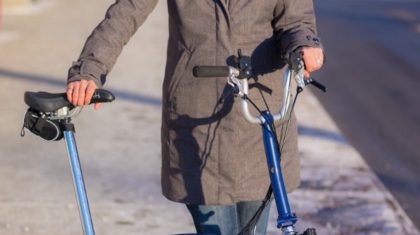
By Bryan Jones, PE, AICP, Principal, Alta Planning + Design
As a young engineer and planner, I was trained to think these were the top transportation issues: level of service (LOS) C or D, on-going maintenance of roads, funding for expansion of freeways and roads to relieve congestion, perfecting the travel demand model forecasts for automobiles.
And, I thought that with 20 years of focusing on how to do those things better with good science and engineering we could overcome those issues. Fatefully, we have not, and will not, and I can see how shortsighted and siloed the way I was taught to think is.
Today, there is an urgent need for a new vision for transportation professionals, one that is focused on the human factors and elements and amenities necessary to design and create great streets and communities where people of all ages and abilities can thrive. As a seasoned engineer and planner with both public and private sector experience, I feel the following are our top transportation issues standing in the way of achieving this new vision:
- Doing the same thing over and over again and expecting a different result. Our feedback loop is broken and we are using the wrong metrics to measure the effectiveness of our streets.
- Trying to build our way out of congestion with bigger, wider, and faster intersections and roadways.
- Need for true leadership and vision to focus on doing the right things including sustainability from a financial prosperity (for individuals and agencies), ecological, and public health, and safety perspective.
- Creating a balance between art and science when it comes to street designs. We shouldn’t have to go to a museum to experience art. Our streets and communities can be beautiful experiences in their own way.
- Lack of collaboration with the community and other professional disciplines to understand our true potential to create great communities through transportation rather than transportation through communities.
Dealing with these issues will require a cultural transformation in our profession. We need to redefine the problems we are trying to solve so new solutions can come into our conversations and approaches to transportation issues. For some in our profession it will require being open to doing things that you have never done before, for others it will require continuing to learn and grow to better serve the changing needs of our communities, for others it will require collaborating with new disciplines, and for all it will require being champions and leaders creating and fostering a new culture focused on people, places, and a sense of community.
We can achieve this by focusing more on the experiences we are creating for people through our design. By identifying what makes places desirable, active, attractive, healthy, prosperous, vibrant, welcoming, safe, and comfortable, everyone will have the opportunity to move, connect, and thrive in their community. Our streets can connect people and create a sense of pride and a civic mindset for a community.
This vision will not be accomplished by solely or predominately using yesterday’s scientific standards, equations, practices, and/or thinking. We should never have solely used LOS to design streets and intersections and VMT (vehicle miles traveled) will not result in better designs either. It will require leadership from our profession that is focused on creating streets where people of all ages and abilities can thrive and have mobility choices and options.
I am proud to be a part of the transportation profession and contributing to its evolution through implementation and more importantly seeking to understand and utilize the strengths of other disciplines such as landscape architects and health professionals. We have made progress in how we approach designing streets. At Alta, we are a mission based company of planners, landscape architects, and engineers that are focused on creating active communities where people can thrive. We are leading the way helping communities transform their policies, practices, and projects to better serve their people and businesses to create great communities. We invite you to join the conversation about how our profession can achieve this vision and create a new way of thinking about our role in creating great communities. Together, I am confident we can reach this vision.


